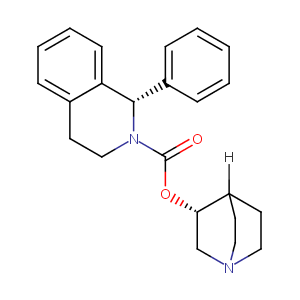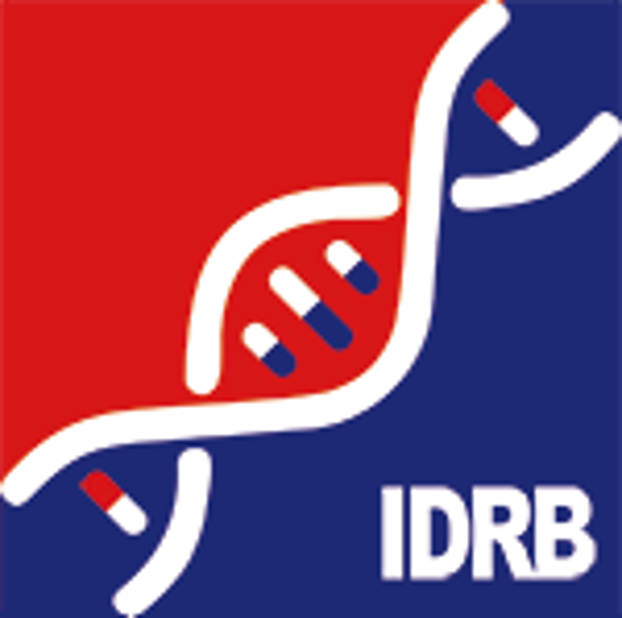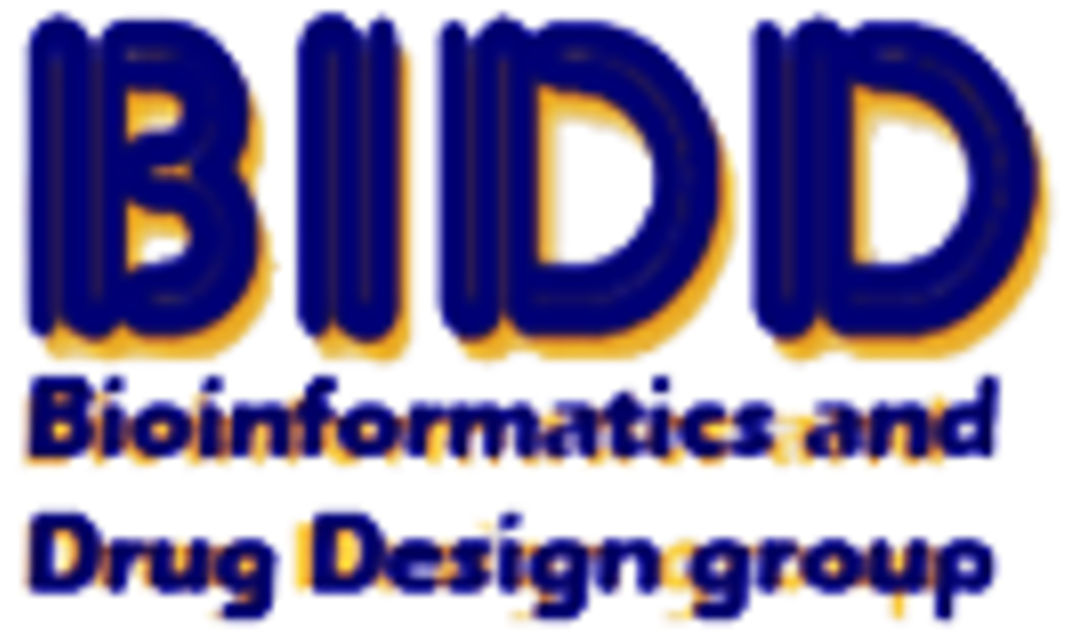Drug Information
| Drug General Information | |||||
|---|---|---|---|---|---|
| Drug ID |
D0L4YD
|
||||
| Former ID |
DAP001129
|
||||
| Drug Name |
Solifenacin
|
||||
| Synonyms |
Vesicare; Vesikur; Butanedioic acid; Solifenacin succinate; Solifenacin succinate [USAN]; YM 905; Solifenacin (INN); Solifenacin [INN:BAN]; Vesicare (TN); YM-53705; YM-67905; YM-905; Quinuclidin-3'-yl-1-phenyl-1,2,3,4-tetrahydroisoquinoline-2-carboxylatemonosuccinate; [(3R)-1-azabicyclo[2.2.2]octan-3-yl] (1S)-1-phenyl-3,4-dihydro-1H-isoquinoline-2-carboxylate; Butanedioic acid, compd with (1S)-(3R)-1-azabicyclo(2.2.2)oct-3-yl 3,4-dihydro-1-phenyl-2(1H)-isoquinolinecarboxylate (1:1); Butanedioic acid, cmpd. with (1S)-(3R)-1-azabicyclo(2.2.2)oct-3-yl 3,4-dihydro-1-phenyl-2(1H)-isoquinolinecarboxylate (1:1); 1-azabicyclo[2.2.2]oct-8-yl (1S)-1-phenyl-3,4-dihydro-1H-isoquinoline-2-carboxylate; 1-azabicyclo[2.2.2]octan-3-yl (1S)-1-phenyl-3,4-dihydro-1H-isoquinoline-2-carboxylate; 2(1H)-Isoquinolinecarboxylic acid, 3,4-dihydro-1-phenyl-, (3R)-1-azabicyclo(2.2.2)oct-3-yl ester, (1S)-, butanedioate (1:1)
|
||||
| Drug Type |
Small molecular drug
|
||||
| Indication | Overactive bladder disorder [ICD9: 188, 596.51; ICD10:C67, N32.81] | Approved | [1], [2] | ||
| Therapeutic Class |
Antispasmodics
|
||||
| Company |
GlaxoSmithKline
|
||||
| Structure |

|
Download2D MOL |
|||
| Formula |
C23H26N2O2
|
||||
| InChI |
InChI=1S/C23H26N2O2/c26-23(27-21-16-24-13-10-18(21)11-14-24)25-15-12-17-6-4-5-9-20(17)22(25)19-7-2-1-3-8-19/h1-9,18,21-22H,10-16H2/t21-,22-/m0/s1
|
||||
| InChIKey |
FBOUYBDGKBSUES-VXKWHMMOSA-N
|
||||
| CAS Number |
CAS 242478-37-1
|
||||
| PubChem Compound ID | |||||
| PubChem Substance ID | |||||
| SuperDrug ATC ID |
G04BD08
|
||||
| SuperDrug CAS ID |
cas=000059961
|
||||
| Target and Pathway | |||||
| Target(s) | Muscarinic acetylcholine receptor M3 | Target Info | Antagonist | [3] | |
| KEGG Pathway | Calcium signaling pathway | ||||
| Neuroactive ligand-receptor interaction | |||||
| Cholinergic synapse | |||||
| Regulation of actin cytoskeleton | |||||
| Insulin secretion | |||||
| Salivary secretion | |||||
| Gastric acid secretion | |||||
| Pancreatic secretion | |||||
| PANTHER Pathway | Alzheimer disease-amyloid secretase pathway | ||||
| Heterotrimeric G-protein signaling pathway-Gq alpha and Go alpha mediated pathway | |||||
| Muscarinic acetylcholine receptor 1 and 3 signaling pathway | |||||
| PathWhiz Pathway | Gastric Acid Production | ||||
| Reactome | Muscarinic acetylcholine receptors | ||||
| Acetylcholine regulates insulin secretion | |||||
| G alpha (q) signalling events | |||||
| WikiPathways | Monoamine GPCRs | ||||
| Calcium Regulation in the Cardiac Cell | |||||
| Regulation of Actin Cytoskeleton | |||||
| GPCRs, Class A Rhodopsin-like | |||||
| Gastrin-CREB signalling pathway via PKC and MAPK | |||||
| Integration of energy metabolism | |||||
| GPCR ligand binding | |||||
| GPCR downstream signaling | |||||
| GPCRs, Other | |||||
| References | |||||
| REF 1 | FDA Approved Drug Products from FDA Official Website. 2009. Application Number: (NDA) 021518. | ||||
| REF 2 | (http://www.guidetopharmacology.org/) Nucleic Acids Res. 2015 Oct 12. pii: gkv1037. The IUPHAR/BPS Guide to PHARMACOLOGY in 2016: towards curated quantitative interactions between 1300 protein targets and 6000 ligands. (Ligand id: 7483). | ||||
| REF 3 | Comparison of muscarinic receptor selectivity of solifenacin and oxybutynin in the bladder and submandibular gland of muscarinic receptor knockout mice. Eur J Pharmacol. 2009 Aug 1;615(1-3):201-6. Epub 2009 May 13. | ||||
If You Find Any Error in Data or Bug in Web Service, Please Kindly Report It to Dr. Zhou and Dr. Zhang.

